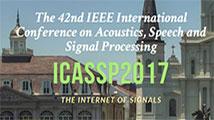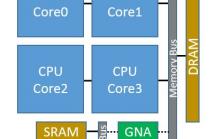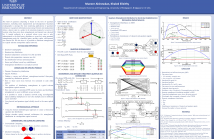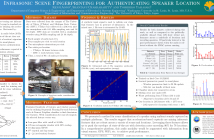
ICASSP is the world's largest and most comprehensive technical conference on signal processing and its applications. It provides a fantastic networking opportunity for like-minded professionals from around the world. ICASSP 2017 conference will feature world-class presentations by internationally renowned speakers and cutting-edge session topics. Visit ICASSP 2017
- Read more about RESPIRATORY AIRFLOW ESTIMATION FROM LUNG SOUNDS BASED ON REGRESSION
- Log in to post comments
poster.pdf
- Categories:
 2 Views
2 Views
- Read more about Implementation of Efficient, Low Power Deep Neural Networks on Next-Generation Intel Client Platforms
- Log in to post comments
ICASSP 2017 Demonstration
PosterFinal.pdf
- Categories:
 573 Views
573 Views- Read more about A PLLR and Multi-stage Staircase Regression Framework for Speech-based Emotion Prediction
- Log in to post comments
Continuous prediction of dimensional emotions (e.g. arousal and valence) has attracted increasing research interest recently. When processing emotional speech signals, phonetic features have been rarely used due to the assumption that phonetic variability is a confounding factor that degrades emotion recognition/prediction performance. In this paper, instead of eliminating phonetic variability, we investigated whether Phone Log-Likelihood Ratio (PLLR) features could be used to index arousal and valence in a pairwise low/high framework.
- Categories:
 8 Views
8 Views- Read more about Hand Gesture Recognition Using Ultrasonic Waves
- Log in to post comments
- Categories:
 11 Views
11 Views
- Read more about DETERMINISTIC AND EFFICIENT THREE-PARTY QUANTUM KEY DISTRIBUTION
- Log in to post comments
The field of quantum computing is based on the laws of quantum mechanics, including states superposition and entanglement. Quantum cryptography is amongst the most surprising applications of quantum mechanics in quantum information processing. Remote state preparation allows a known state to a sender to be remotely prepared at a receiver’s location when they prior share entanglement and transmit one classical bit.
- Categories:
 16 Views
16 Views
- Read more about SURROUNDING ADAPTIVE TONE MAPPING IN DISPLAYED IMAGES UNDER AMBIENT LIGHT
- Log in to post comments
In this paper, we propose surrounding adaptive tone mapping in displayed images under ambient light. Under strong ambient light, the displayed images on the screen are darkly perceived by human eyes, especially in dark regions. We deal with the ambient light problem in mobile devices by brightness enhancement and adaptive tone mapping. First, we perform brightness compensation in dark regions using Bartleson-Breneman equation which represents lightness effect on the image under different surrounding illuminations.
- Categories:
 55 Views
55 Views
- Read more about INFRASONIC SCENE FINGERPRINTING FOR AUTHENTICATING SPEAKER LOCATION
- Log in to post comments
Ambient infrasound with frequency ranges well below 20 Hz is known to carry robust navigation cues that can be exploited to authenticate the location of a speaker. Unfortunately, many of the mobile devices like smartphones have been optimized to work in the human auditory range, thereby suppressing information in the infrasonic region. In this paper, we show that these ultra-low frequency cues can still be extracted from a standard smartphone recording by using acceleration-based cepstral features.
- Categories:
 8 Views
8 Views- Read more about IMAGE COMPRESSION WITH STOCHASTIC WINNER-TAKE-ALL AUTO-ENCODER
- Log in to post comments
This paper addresses the problem of image compression using
sparse representations. We propose a variant of autoencoder
called Stochastic Winner-Take-All Auto-Encoder
(SWTA AE). “Winner-Take-All” means that image patches
compete with one another when computing their sparse representation
and “Stochastic” indicates that a stochastic hyperparameter
rules this competition during training. Unlike
auto-encoders, SWTA AE performs variable rate image compression
for images of any size after a single training, which
- Categories:
 8 Views
8 Views- Read more about QUANTISATION EFFECTS IN PDMM: A FIRST STUDY FOR SYNCHRONOUS DISTRIBUTED AVERAGING
- Log in to post comments
Large-scale networks of computing units, often characterised by the absence of central control, have become commonplace in many applications. To facilitate data processing in these large-scale networks, distributed signal processing is required. The iterative behaviour of distributed processing algorithms combined with energy, computational power, and bandwidth limitations imposed by such networks, place tight constraints on the transmission capacities of the individual nodes.
- Categories:
 8 Views
8 Views- Read more about Reweighted Block-Based Compressed Sensing Using Singular Value Decomposition
- Log in to post comments
Existed inherent sparsity of natural images in some domains helps to reconstruct the signal with a lower number of measurements. To benefit from the sparsity, one should solve the reweighted $\ell_{1}$-norm minimization algorithms. Although, the existed reweighted $\ell_{1}$-norm minimization approaches work well for k-sparse signals, but, the performance of these methods for compressible signals are not competitive with unweighted one.
poster.pdf
- Categories:
 191 Views
191 Views